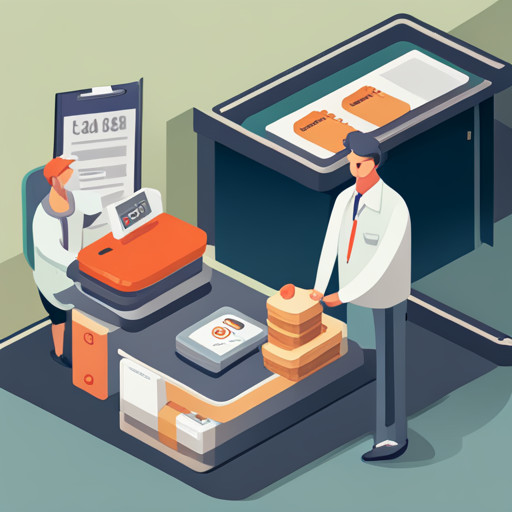Tips for Dealing with Insurance Adjusters How to Handle Negotiations
An estimated 95% of personal injury cases are settled before trial, often through negotiations with insurance adjusters. This article elucidates the role of these adjusters and offers strategic advice for effective communication, document organization, and negotiation techniques.

It further highlights the importance of understanding medical release forms, valuing injury claims accurately, and handling difficult adjusters.
The objective is to equip individuals with the knowledge required for successful interactions with insurance adjusters.
Key Takeaways
- Be prepared for first contact and know your rights
- Avoid confiding in the adjuster and be cautious with what you say
- Maintain appropriate lines of communication and document conversations
- Organize your documents and create a claim file
Understanding the Role of Insurance Adjusters

In the context of handling negotiations with insurance adjusters, understanding their role is fundamental to ensuring a fair and prompt resolution. The adjusters investigate accidents, determine fault, calculate the value of claims, and negotiate settlements. They hold significant authority in determining the outcome of a claim.
Preparing for negotiations requires a thorough understanding of the adjuster's role, responsibilities, and common negotiation tactics. This process includes familiarizing oneself with the adjuster's strategy in determining fault and their methods of calculating claim values.
Moreover, it is crucial to anticipate the negotiation tactics commonly employed by adjusters. These tactics can range from delaying tactics to disputing medical treatment. Knowledge of these factors assists in achieving a fair and swift settlement negotiation.
Preparing for the First Contact With Adjusters

Preparation for initial engagement with claims adjusters entails understanding one's rights and anticipating potential strategies employed by these professionals. The process of preparing for initial contact with adjusters involves thorough research and meticulous documentation.
Familiarity with policy details, claim procedures, and relevant laws is essential. Gathering and organizing all necessary documents, such as medical reports, repair bills, and evidence of other losses, aids in presenting a comprehensive claim.
Understanding the adjuster's mindset is crucial in navigating conversations and negotiations effectively. Claims adjusters, trained to minimize payout, employ various methods to achieve this. Anticipating these tactics enables effective counter strategies, ensuring a fair settlement.
Maintaining a professional demeanor, emphasizing facts over emotions, is advisable during interactions.
The Importance of Caution While Communicating With Adjusters

Exercising discretion and caution during communication with claims adjusters is paramount to preventing any misunderstanding or misrepresentation of claim details. The importance of being cautious with adjusters cannot be overstated, as their role is to scrutinize the validity and value of a claim. To maintain steady ground, effective communication strategies with adjusters are recommended.
- Exercise caution:
- Avoid sharing unnecessary information
- Be mindful of leading questions
- Employ effective communication strategies:
- Keep interactions professional
- Document all conversations.
Undoubtedly, a claimant's ability to navigate these interactions can significantly influence the outcome of a claim. Hence, understanding the adjuster's role and adopting a cautious yet proactive approach is crucial.
Understanding Medical Release Forms

Comprehension of medical release forms, particularly their content and implications, is a critical aspect in the claim process. These forms, when correctly understood, offer a safeguard during negotiations with insurance adjusters.
The forms provide permission for insurance adjusters to access an individual's medical information, which can be used in determining the value of claim settlements. However, the potential misuse of this information necessitates careful scrutiny of these forms.
It is paramount to ensure that the release pertains only to injuries related to the incident under negotiation, not a blanket release for all medical records. This precision in understanding the scope of medical release forms is pivotal in negotiating settlements and protecting the claimant's rights.
Organizing Documents for a Claim File

Organization of relevant documents into a comprehensive claim file serves as an indispensable step in the claim process, promoting effective communication and thorough record-keeping. This process underscores the importance of organization in ensuring all pertinent information is readily accessible, thereby facilitating a smoother negotiation process.
Key components of an effective claim file include:
- Documentation: This encapsulates medical reports, damage estimates, and any other evidence relevant to the claim. Medical reports substantiate injury claims and form a critical part of the negotiation process. Damage estimates provide a quantitative basis for settlement discussions.
- Correspondence: This includes communication with insurance adjusters and other parties involved in the claim. Such documentation serves as a record of discussions, agreements, and decisions, reinforcing the role of evidence in negotiations.
Through proper organization, claimants can ensure a comprehensive and credible claim file.
Mutual Interests in Claim Settlements

Mutual interests in claim settlements frequently emerge as both parties strive for a prompt and fair resolution, underscoring the importance of negotiation in the process. From the insurer's perspective, a swift settlement reduces administrative costs and increases customer satisfaction. For claimants, a quick resolution provides financial relief and closure. The negotiation process is thereby framed by these mutual interests, necessitating effective communication and flexibility.
| Parties Involved | Mutual Interests |
|---|---|
| Insurance Companies | Minimizing Costs, Enhancing Customer Satisfaction |
| Claimants | Financial Relief, Swift Resolution |
Negotiating with adjusters requires understanding their role and tactics. Adjusters, trained to minimize payout, employ various negotiation strategies. Claimants must therefore be prepared, armed with a thorough understanding of their claim's value and a firm yet flexible negotiation strategy. The mutual interests in settlement can act as a bridge towards a fair resolution.
Proving Fault and Injury Severity to Adjusters

Establishing liability and the severity of injuries to the claims adjuster forms a critical step in securing a fair settlement.
* Proving Fault
Gathering evidence: Documentation of the accident scene, witness testimonies, and police reports are essential for proving fault.
Legal counsel: A knowledgeable attorney can assist in establishing liability, especially in complex cases.
* Injury Severity
Medical evidence: Detailed medical records, including diagnosis, treatment, and prognosis, can help demonstrate the severity of injuries.
Expert testimony: Medical experts can provide an objective evaluation of the injury, contributing significantly to the claim.
These steps, when meticulously followed, can significantly impact negotiations with insurance adjusters, invariably leading to a just settlement.
Insurance adjusters value concrete evidence when evaluating claims, hence, comprehensive documentation is paramount.
The Role of a Negotiation Checklist

Following the process of proving fault and severity of injuries to adjusters, the focus now shifts to the role of a negotiation checklist in dealing with insurance adjusters.
The importance of preparation in negotiations cannot be overstressed. A well-structured negotiation checklist aids in ensuring that all necessary evidence, including medical reports and details of the incident, are prepared and presented meticulously. This eliminates the probability of missing out on crucial points during the negotiation process.
Furthermore, strategies for effective communication with adjusters are integral to the negotiation process. These strategies include maintaining composure, speaking succinctly, and avoiding unnecessary information that could be detrimental.
Therefore, the combination of a thorough negotiation checklist and effective communication strategies immensely contribute to successful negotiations with insurance adjusters.
Writing an Effective Settlement Demand Letter

Crafting an effective settlement demand letter is a critical step in the negotiation process, as it formally communicates the claimant's expectations and the supporting evidence. This task requires a detailed, clear, and professional style of writing. Writing a persuasive demand letter involves:
- Detailing the accident and resulting injuries.
- Including medical reports and bills.
- Photographs of injuries and damage to property.
- Explaining why the defendant is at fault.
- Including any police reports.
- Witness statements, if available.
Effective negotiation tips include:
- Being patient and persistent.
- Not accepting the first offer.
- Documenting everything.
- Keeping copies of all correspondence.
- Staying professional.
- Avoiding emotional or confrontational language.
Through this approach, the likelihood of a successful negotiation and settlement increases.
The Process of Valuing an Injury Claim

Accurately valuing an injury claim demands a comprehensive assessment of both economic and non-economic damages incurred. Economic damages include quantifiable losses such as medical bills and lost wages, whereas non-economic damages encompass intangible losses like pain and suffering. The process of valuation often requires the expertise of professionals in medicine, economics, and vocational rehabilitation.
Once the claim's value is ascertained, the stage of negotiating a settlement begins. Here, the objective is to reach an agreement that fairly compensates the injured party. This negotiation process often involves countering low settlement offers and demonstrating the validity of the claim's valuation.
The ultimate result should ideally reflect the full extent of the damages sustained, ensuring justice for the injured party.
The Art of Countering Low Settlement Offers

Mastering the art of countering low settlement offers is a pivotal skill in the negotiation process, as it ensures that the value of the claim is not undervalued and the injured party receives a fair and just compensation.
Effective negotiation tactics include:
- Calculating the value of the claim accurately, including consideration for pain and suffering
- Constructing a detailed settlement demand letter, backed by a robust packet of evidence
Countering lowball offers requires:
- Patience and persistence, since the process might involve several rounds of negotiation
- Readiness to engage with diverse negotiating styles and tactics from adjusters
This approach ensures that the injured party's rights are protected and the final settlement accurately reflects the severity and impact of their injuries.
Reaching a Settlement: Confirming Terms in Writing

Upon reaching a settlement, it is essential to confirm all agreed-upon terms in writing to provide a legally binding record of the resolution. This process, termed as confirming settlement terms, is crucial to avoid any future disputes and ensures both parties adhere to their commitments. Seeking legal advice in this stage can further enhance the credibility and enforceability of the settlement agreement.
| Action | Importance |
| Confirming terms in writing | Ensures clarity, reduces ambiguity |
| Getting legal advice | Validates legality, improves enforceability |
| Reviewing settlement agreement | Assures mutual understanding, prevents future disputes |
| Ensuring all parties agree | Promotes harmony, respect for the agreement |
| Signing the agreement | Makes it legally binding, concludes the negotiation |
This practice underscores the importance of meticulousness, articulation, and professional guidance in reaching a successful settlement.
How to Handle Difficult Adjusters and Seek Legal Advice

Navigating the complexities of interacting with challenging claim adjusters often necessitates seeking professional legal advice to ensure a fair and equitable resolution. Difficult adjusters may cause undue stress and hinder the process of claim settlement. Therefore, understanding their tactics is essential.
- Tactics of Difficult Adjusters
- Delaying the process unnecessarily
- Denying claims without proper justification
Solutions for Dealing with Difficult Adjusters
- Seeking legal advice promptly
- Documenting all interactions for future reference
The importance of seeking legal advice cannot be overstated. Legal professionals can provide insights into the tactics employed by difficult adjusters and guide individuals through the complex process of claim negotiation and settlement, thereby ensuring a fair outcome.
Frequently Asked Questions
What Is the Typical Timeline for an Insurance Claim Settlement Process?
The timeline for an insurance claim settlement process varies, typically spanning several weeks to months.
Initially, claim documentation is submitted to the insurance company.
The adjuster then reviews the claim, which can take weeks.
Following this, negotiations may ensue, potentially leading to settlement disputes.
If an agreement is reached, payment follows shortly.
However, in cases of unresolved disputes, legal action may extend the timeline significantly.
It should be noted that each case is unique, influencing the timeline.
How Can I Protect Myself From Insurance Adjuster Tactics That Aim to Minimize My Claim?
To protect oneself from insurance adjuster tactics aimed at claim minimization, diligent claim documentation is crucial. This includes maintenance of all relevant records, photographs, and medical reports.
In addition, securing legal representation can provide vital assistance in navigating the complexity of insurance negotiations, ensuring fair treatment, and countering any attempts to undervalue a claim.
This strategy can also offer valuable guidance in understanding policy terms, thus aiding in the prevention of any potential exploitation.
How Does an Adjuster’s Role Differ in Large-Scale Disaster Scenarios Compared to Individual Accident Claims?
In large-scale disaster scenarios, the adjuster's role becomes more complex due to the magnitude of the claims involved.
The techniques used in disaster adjusting may include rapid assessment methods and advanced technology, such as drone surveys.
The emotional challenges for adjusters are also heightened due to the traumatic nature of the disaster and the large number of victims involved.
These factors differentiate disaster adjusting from the handling of individual accident claims.
In What Circumstances Can an Insurance Adjuster Deny My Claim?
Insurance adjusters can deny claims under various circumstances. Key reasons for claim rejection include lack of coverage during the incident, late or incomplete claim filing, and suspicion of fraudulent activities.
Furthermore, adjusters operate within authority limits, with larger claims often requiring supervisor approval. Therefore, understanding the policy, adhering to reporting requirements, and maintaining honest communication can significantly mitigate the risk of claim denial.
What Steps Can I Take if I Believe the Insurance Adjuster Is Acting Unethically or in Bad Faith?
In cases where an insurance adjuster is suspected of unethical behavior or acting in bad faith, several steps can be taken.
Initially, communication with the adjuster's supervisor or the insurance company's complaint department may rectify the issue.
If this fails, lodging a complaint with the state insurance board is an option.
In more severe circumstances, 'Unethical Adjuster Consequences' may include legal action, with 'Bad Faith Lawsuits' potentially resulting in compensation for the claimant.

This post has been generated by AI and was not reviewed by editors. This is Not legal advice. Please consult with an attorney.




